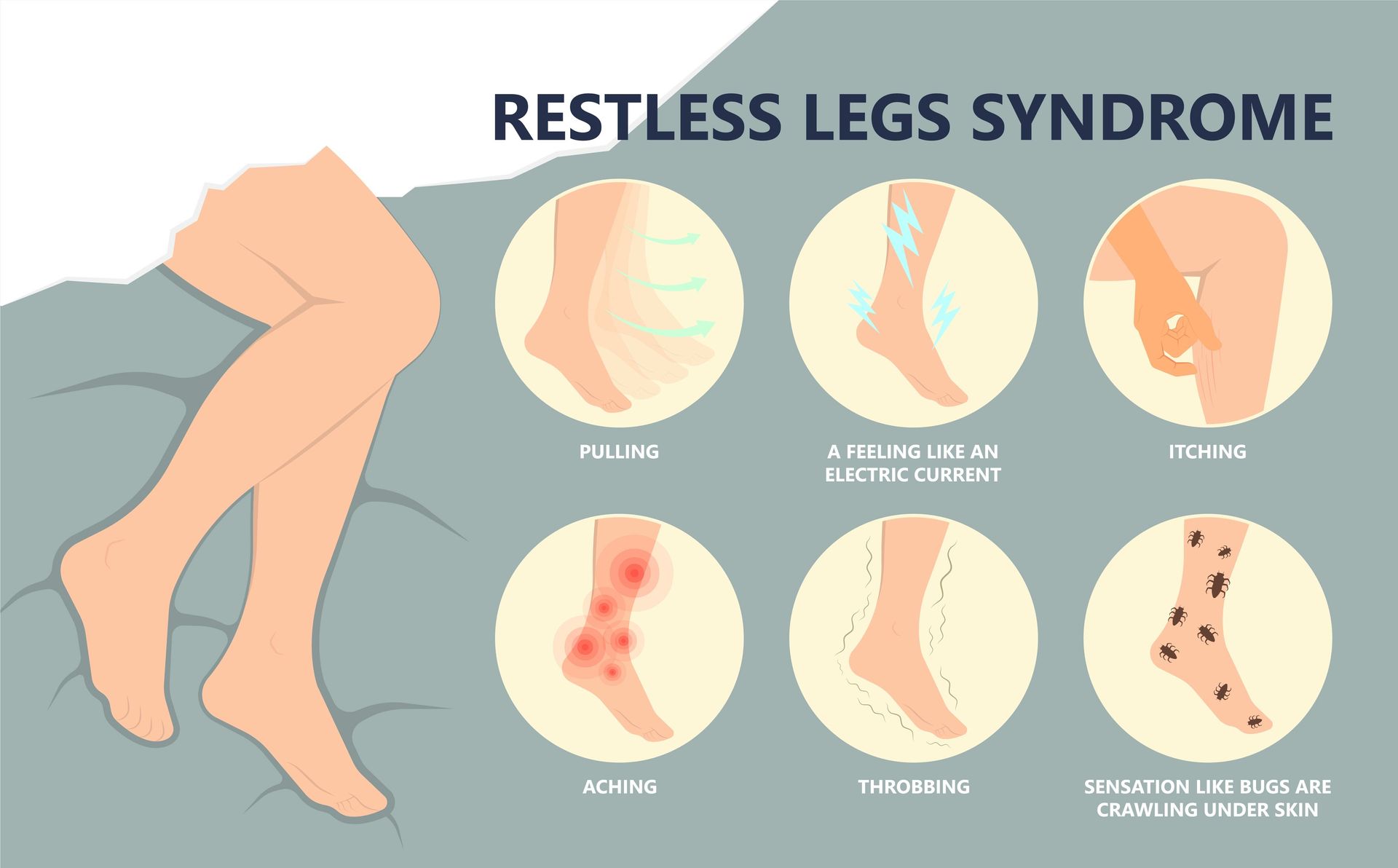
If you suffer from restless leg syndrome (RLS) or frequent nighttime movement, you know how disruptive it can be, not just to your sleep, but to your entire quality of life. Whether it's the constant urge to shift positions, leg twitching or waking up frequently, disruptions that negatively affect your rest can be felt during your waking hours in everything from energy levels to mood and concentration.
While there’s no single solution for RLS or restless sleep, the right mattress can make a significant difference in how comfortably you rest and how much your movements affect your spouse or partner.
About Restless Leg Syndrome and Movement at Night
Restless Leg Syndrome is a neurological disorder that causes an irresistible urge to move your legs, especially when lying down or relaxing. It often comes with tingling, aching or crawling sensations that worsen at night and improve with movement. While RLS itself requires medical attention, your sleep environment plays a big role in managing symptoms.
Even if you don’t have RLS, frequent tossing and turning caused by discomfort or overheating can lead to similar sleep disruptions. Either way, your mattress shouldn’t be making it worse.
How the Right Mattress Can Help
A good mattress won’t cure RLS or stop all movement, but it can reduce the triggers that worsen restlessness and support better quality sleep overall.
Pressure Relief: Finding Comfort Without Constant Movement
For people with RLS or restless sleep, pressure points can become a constant trigger for movement. When a mattress places too much pressure on areas like the hips, knees or lower back, your body may react by shifting positions over and over again in search of relief.
The right mattress helps by evenly distributing your weight and easing tension on sensitive areas, reducing the need to toss and turn throughout the night.
Two materials that stand out for pressure relief in this context are latex and innerspring systems with updated designs:
- Latex is buoyant and naturally conforming without feeling “sticky” or slow to respond. It cradles your curves with just enough give to relieve pressure but is also springy enough to allow easy movement, which is a big plus for those dealing with restlessness.
- Modern Innerspring Mattresses, especially those built with foam-encased individually wrapped coils, have come a long way from the stiff, creaky beds of the past. These coils move independently, and added foam can offer targeted support to high-pressure areas while maintaining airflow and edge support. When paired with a plush or latex comfort layer on top, they can strike a great balance between support and softness.
Bounce: Choosing the Right Level of Responsiveness
Some bounce is good for sleepers, especially if it helps you shift positions without effort, which is important for people with RLS. But too much bounce can feel chaotic and disruptive, especially if you're already prone to movement or share the bed with a partner.
The key is finding a mattress that supports ease of movement without amplifying every twitch or turn. Many sleepers with RLS find that latex mattresses hit the sweet spot here.
Motion Isolation: Helping You and Your Partner Sleep Through It
If you have RLS or restless sleep, movement doesn’t just affect you; it affects the person next to you. That’s why motion isolation is crucial.
Mattresses made with dense foams or pocketed coils tend to isolate motion best. These materials prevent the ripple effect that sends vibrations across the bed when someone moves. If you or your partner is constantly readjusting, a mattress with strong motion isolation can minimize how much that movement spreads.
Some mattress designs even feature zoned support, offering extra reinforcement around the hips and shoulders to keep your spine aligned while allowing lighter cushioning around the legs, helping restless limbs move without disturbing the entire sleep surface.
Cooling and Breathability Matter, Too
People with RLS often report worsening symptoms when they’re overheated. A breathable mattress that maintains a neutral temperature can help keep things calm.
Natural latex and innerspring mattresses with airflow-promoting designs can all contribute to a cooler sleep environment. Avoid low-quality foams that trap heat and increase restlessness.
The Importance of Mattress Testing and a Personal Fit
There’s no one perfect mattress for everyone dealing with RLS or nighttime movement. That’s why it’s essential to try before you buy when possible, or choose a mattress from a company that offers personalized support.
At Twilight Bedding, we encourage you to test out multiple comfort levels and materials. We’ll walk you through the differences between innerspring and latex models and explain how each layer works to reduce restlessness and improve comfort.
We’re Here to Help You Sleep Better No Matter What You’re Dealing With
If nighttime movement or RLS is disrupting your sleep, don’t wait to make a change. A better mattress can’t solve everything, but it can provide the comfort, pressure relief and stability you need to sleep deeper and wake up more refreshed.
At Twilight Bedding, we specialize in high-quality, supportive mattresses that are thoughtfully designed with real-life sleep issues in mind. Whether you're looking for gentle bounce, cooling materials or minimal motion transfer, we’ll help you find the perfect match.
Let’s Find the Best Mattress in Spokane for Your Kind of Rest
Our friendly team is here to guide you through your options, answer your questions and help you sleep easier, even if your nights have been restless for years.
Call our Spokane Valley showroom at (509) 926-2333 or our North Spokane Showroom at (509) 413-2431, or visit us to try our mattresses in person today.






